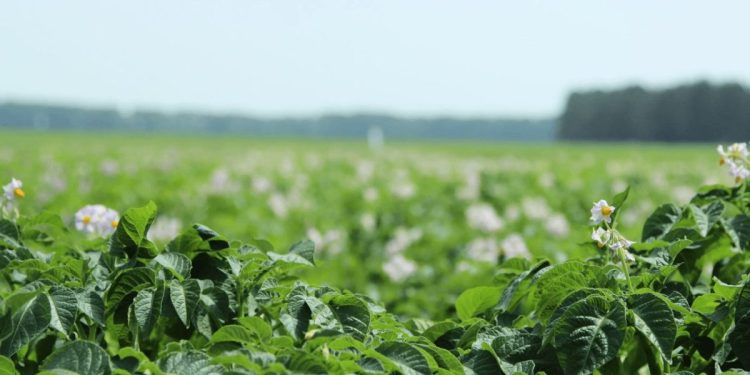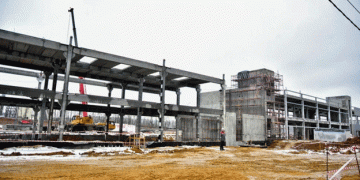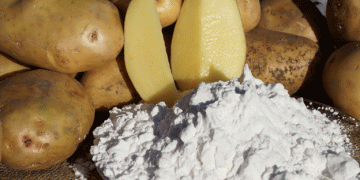#PotatoCultivation #HeatStress #DroughtStress #ClimateChange #SustainableFarming #CropResilience #AgriculturalInnovation
As global temperatures rise and extreme weather events become more frequent, heat and drought stress pose significant challenges to potato cultivation. In this article, we explore the development and consequences of heat and drought stress on potatoes, and investigate potential strategies for preventing damage. By optimizing irrigation techniques, utilizing drought-tolerant varieties, implementing shade structures, and employing innovative farming practices, we can strive to protect potato crops and ensure sustainable production in the face of climate change.
Potatoes are one of the world’s most important staple crops, providing vital nutrition and income for millions of people. However, they are highly susceptible to heat and drought stress, which can lead to reduced yields, poor tuber quality, and increased susceptibility to diseases and pests. With global temperatures on the rise and precipitation patterns becoming more erratic, the impact of these stressors on potato cultivation is a growing concern.
Heat stress occurs when temperatures exceed the optimal range for potato growth, typically around 15-25 degrees Celsius (59-77 degrees Fahrenheit). Prolonged exposure to high temperatures can disrupt the potato plant’s metabolic processes, impair photosynthesis, and hinder tuber formation. As a result, heat-stressed potatoes may exhibit reduced growth, smaller tubers, and increased internal defects.
Drought stress, on the other hand, arises when there is insufficient water availability for the plant’s needs. Potatoes rely on an adequate water supply to facilitate nutrient uptake, maintain turgidity, and support cellular functions. In the absence of adequate moisture, the plant’s growth is stunted, and tuber development is hampered. Drought stress can also result in higher concentrations of toxic compounds, such as solanine, in the tubers, making them unsuitable for consumption.
The detrimental effects of heat and drought stress on potato crops have severe consequences for farmers, food security, and the economy. Reduced yields and poor tuber quality translate into financial losses for potato growers, while global food supplies are compromised, affecting both availability and affordability. Furthermore, the vulnerability of small-scale farmers is exacerbated, as they often lack the resources and infrastructure to cope with such climatic challenges.
However, there is hope. Researchers, farmers, and agronomists are actively seeking ways to mitigate the impact of heat and drought stress on potatoes. By adopting innovative strategies, we can work towards preserving potato productivity and ensuring sustainable food systems.
One approach involves optimizing irrigation techniques to ensure efficient water use. Precision irrigation systems, such as drip irrigation or soil moisture sensors, can help deliver water directly to the plant’s root zone, reducing water loss through evaporation and improving water-use efficiency. Proper timing and scheduling of irrigation can also minimize the negative effects of drought stress.
Another solution lies in the cultivation of drought-tolerant potato varieties. Plant breeding programs are focusing on developing new cultivars that exhibit enhanced resilience to heat and drought stress. By selecting and propagating these varieties, farmers can improve their chances of success in challenging climatic conditions.
Implementing shade structures, such as nets or overhead screens, can offer protection against excessive heat and radiation. These structures can modify the microclimate surrounding the potato plants, reducing temperature extremes and preventing direct sun exposure. Furthermore, the use of mulching materials, such as straw or plastic film, can conserve soil moisture and mitigate water stress.
To address heat and drought stress, farmers can also adopt agroecological practices that promote soil health and water retention. Practices like cover cropping, crop rotation, and organic amendments improve soil structure and water-holding capacity, creating a more resilient growing environment for potatoes.
While heat and drought stress pose significant challenges to potato cultivation, proactive measures can be taken to prevent damage and maintain productivity. By optimizing irrigation techniques, utilizing drought-tolerant varieties, implementing shade structures, and adopting agroecological practices, farmers can adapt to the changing climate and secure the future of potato farming.






